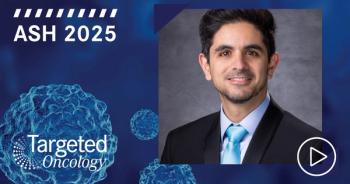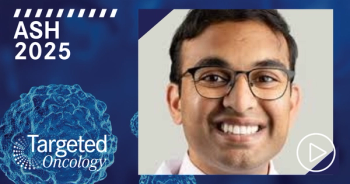
Unmet Needs for Patients With AML
Naval G. Daver, MD, discusses the unmet needs that still exist in the treatment of acute myeloid leukemia.
Acute myeloid leukemia (AML) treatment faces 3 major challenges, according to Naval G. Daver, MD, associate professor in the Department of Leukemia at MD Anderson Cancer Center. The first is in TP53-mutated AML. Existing drugs haven't worked in large trials, but newer drugs and specialized antibodies are being explored. The second is with defining and using minimal residual disease (MRD), as its use for regulatory approval of AML drugs could be crucial. High-sensitivity assays to track mutations like NPM1 and FLT3 are promising, and MRD-positive patients might benefit from immune/cellular therapies. Thirdly, while targeted therapies exist for specific mutations, no effective standard therapy exists for the remaining 50-60% of patients without targetable mutations. Immunotherapies, MDM2 inhibitors, CDK4/6 inhibitors, and antibody-drug conjugates targeting CD123 and other antigens are being investigated to fill this gap. These unmet needs hold the key to improving AML outcomes for various patient groups.
Transcription:
0:09 | I think the the probably the 3 biggest unmet needs are for newly diagnosed TP53-mutated AML. This is a population where there [are] a lot of ongoing efforts and recent clinical trials that were hopeful in the phase 1 study but so far have not shown the same activity in randomized phase 3 studies—drugs such as APR-246 [Eprenetapopt], magrolimab. There are other CD47-SIRPα antibodies. That pathway still scientifically seems to be very relevant with a lot of high-impact science papers published on it, and especially in TP53, we think it could be an important pathway. So even though magrolimab so far has not shown activity, we're hoping there are other CD47-SIRPα antibodies, such as [TTI-621 and TTI-622], as well as bispecific antibodies that are still in evaluation. So hopefully, we will find some forward directions for the TP53-mutated AML. That's probably the biggest unmet need.
0:59 | I think the second is probably minimal residual disease-based therapies and even defining and establishing minimal residual disease as an end point, not just for interventional clinical trials, but potentially in the future for certain specific types of minimal residual disease, even as a regulatory end point. Some of the data that is coming out with NPM1 using high-sensitivity molecular MRD assays, as well as FLT3 using high sensory molecular MRD assays is suggesting that these mutations could be trackable at very, very, very low levels. And achievement of minimal residual disease using such high sensory molecular longitudinal tracking could be very helpful to protect long-term survival. And maybe in the future, if recurrently shown to be consistently prognostic, could even be used for approvals and regulatory pathways, which of course, would make the drug approval and timeline much, much shorter. So I think that's a big area of interest, but also then what to do for patients who are MRD-positive once you've given them intensive chemo, with or without FLT3, those who have received [hypomethylating agent/venetoclax]-based treatments who are MRD-positive. So we're looking at a number of immune and cellular therapies. At that point, because the disease burden is low, the tumor microenvironment does not seem to be as immune-evasive or immune-suppressive. And now a number of [chimeric antigen receptor T cell] and [natural killer] cell-based studies are coming into that space.
2:18 | And I think the third big area is probably for relapsed/refractory AML that do not have a targetable mutation. So, for FLT3-mutated, IDH1, IDH2-mutated, as well as now emerging for MLL-rearranged and NPM1 with menin inhibitors, we do have effective salvages, initially as single agents moving into combinations, showing high response rates as well as a good opportunity to get those patients for transplant with a chance at long-term survival. But for the other 50-60% who do not have one of these targetable mutations, there's really no effect established therapy that has shown to be active. So there's a effort here, again, to look at potentially immunotherapies or other novel molecular pathway based approaches such as MDM2 inhibitors, CDK9, MCL1, a number of studies are looking at these in phase 1. But also potentially, there's a resurgence of antibody drug conjugates [ADCs] in AML. So we use these in the form of gemtuzumab CD33 in the frontline. But now there's a wave of new, better toxin, better payload, better linker ADCs that are targeting CD123 and other AML antigens. And I think these will, in the next 4 or 5 years, find an important place in relapsed/refractory AML in patients who do not have a targetable mutation.










































